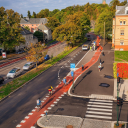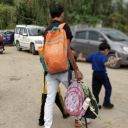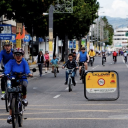


How higher quality data can help improve urban planning and reduce inequities
Local-level, high-quality data can provide powerful insights for urban planning and lead to better policies on mobility, climate adaptation, gender equity and more. But only if the inputs are good and there’s enough capacity to analyse it effectively.Read more
What are we learning about urban wellbeing during COVID?
In recent years, many cities have launched new efforts to build healthier urban environments – happier, safer and cleaner places to work and play. Then, of course, the COVID-19 pandemic changed everything.Read more
Lessons from lockdown: How COVID-19 affected road safety around the world
COVID-19 changed the way people move around cities. In 2020, demand for travel dropped dramatically, and many urban areas enforced restrictions on movement through lockdowns in a bid to control the impact of the pandemic.Read more
The state of electric school bus adoption in the USA
There are nearly half a million school buses in the United States that transport more than 20 million children to and from school. Some 95 per cent of these school buses run on diesel, a known...Read more
From emergent to permanent: 3 steps to transform cycling infrastructure beyond the pandemic
When the COVID-19 pandemic hit, concerns surrounding virus transmission on public transportation led many to choose alternate mobility options – most notably, cycling. Cycling gained popularity for both recreational use and commuting, a trend especially evident in...Read more
How Oslo achieved zero pedestrian and bicycle fatalities, and how others can apply what worked
In 2015, the City of Oslo, Norway, made a commitment after years of rising transportation injuries to reduce car traffic and prioritize the safety of pedestrians, cyclists and the environment.Read more
What makes a child-friendly city? Redesigning safer and healthier urban spaces for young people
Children are often under-prioritized or even disregarded in urban planning and design. It’s estimated that up to 500 children die daily in road crashes around the world; thousands more incur injuries and psychological trauma from collisions...Read more
Gurugram’s youth: ‘Give us safer streets’
India accounts for almost 12 per cent of the 1.35 million road fatalities worldwide. But this public health crisis does not affect everyone equally. Children and young people are at heightened risk. In fact, road crashes...Read more

